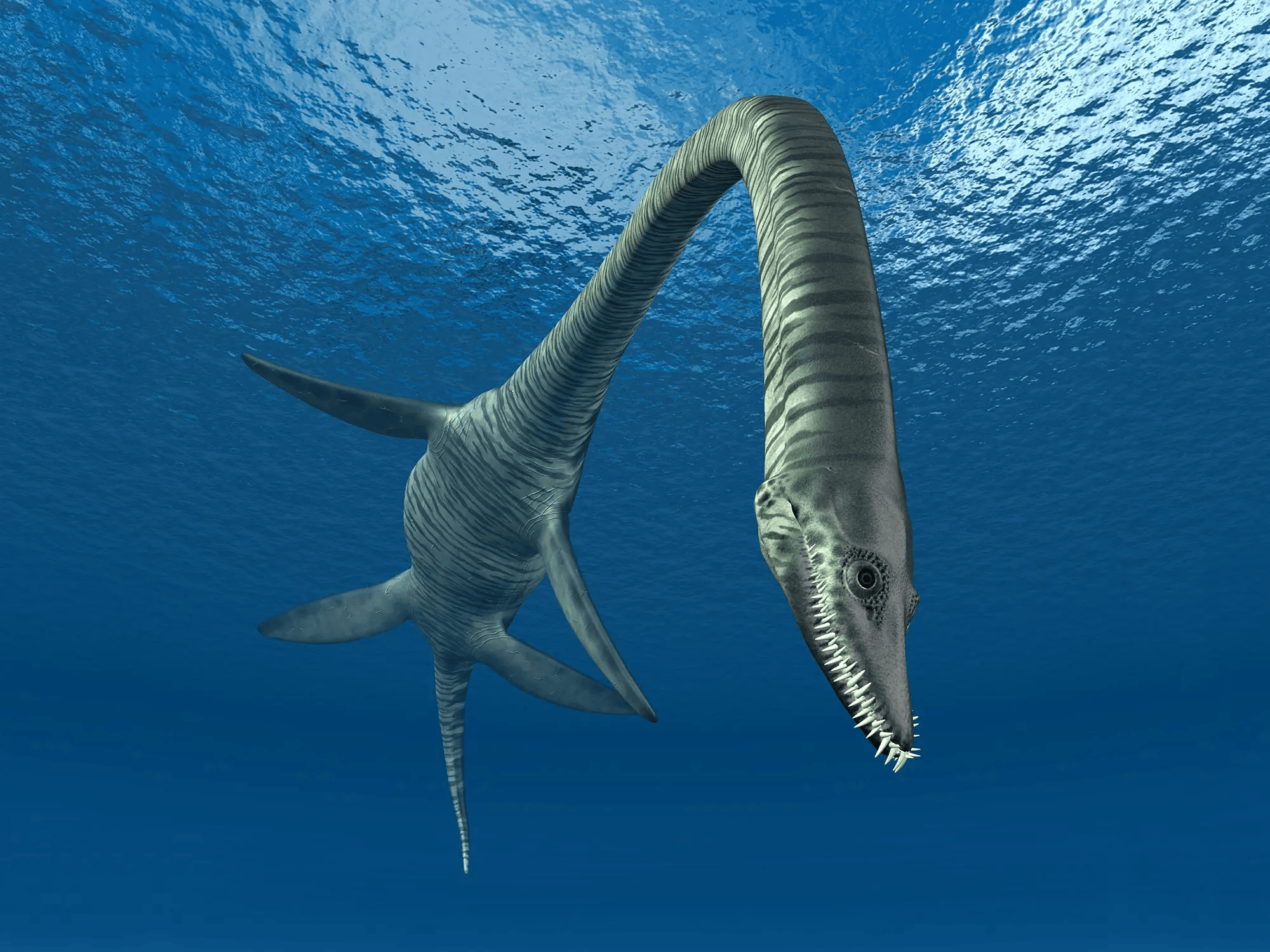Whiplash In Evolution: Plesiosaurs Doubled Their Neck Length by Adding New Vertebrae?
Plesiosaurs evolved their distinctive long necks quickly within five million years according to a recent study that introduced a new predecessor Chusaurus xiangensis.
According to study plesiosaurs gained their characteristic long necks in a relatively short period of time.
These lengthened necks which are thought to have been used to hunt fast-moving fish evolved rapidly over a five-million-year span around 250 million years ago.
The findings published recently in the journal BMC Ecology and Evolution by experts from China and the United Kingdom demonstrate that pachypleurosaurs stretched their necks mostly by adding additional vertebrae. This species had 25 vertebrae although some Late Cretaceous plesiosaurs had up to 72 and its neck was five times the length of its trunk.
New Discoveries And Origins
These organisms initially appeared four million years after the end-Permian mass extinction which resulted in the extinction of over 90% of Earth's species. Following the devastating incident this period was marked by rapid transformations.
The researchers report Chusaurus xiangensis a new short-necked plesiosaur progenitor from the Early Triassic of Hubei Province China. Its neck has begun to lengthen but it is barely half the length of its body's trunk compared to 80% or higher in later cousins.
"We were lucky enough to find two complete skeletons of this new beast" said project leader Qi-Ling Liu of the China University of Geosciences in Wuhan. "It's small less than half a meter long but it's related to the important group of marine reptiles known as Sauropterygia."
"Our new reptile Chusaurus is a pachypleurosaur a type of small marine predator that was common during the Triassic period." I wasn't sure if it was a pachypleurosaur at first because the neck seemed too short."
Comparisons And Context
"The fossils come from the Nanzhang-Yuan'an Fauna of Hubei" stated Dr. Li Tian co-supervisor of the project at China University of Geosciences Wuhan. "This has been extensively studied in recent years as one of the oldest assemblages of Triassic marine reptiles." We have high-quality radiometric dates that reveal the fauna was formed 248 million years ago."
"The end-Permian mass extinction had been the biggest mass extinction of all time" said collaborator Professor Michael Benton of the University of Bristol's School of Earth Sciences.
"The Early Triassic was a time of recovery and marine reptiles evolved quickly most of which were predators of shrimp fish and other sea creatures." They arose immediately after the extinction so we know their rates of change in the new environment after the crisis were quite rapid."
"The pachypleurosaurs lengthened their necks primarily by adding new vertebrae" stated co-supervisor Professor Cheng Long of the China Geological Survey's Wuhan Centre.
"Normally animals such as reptiles mammals and humans have seven neck vertebrae. Chusaurus already had 17 while Pachypleurosaur later had 25. Elasmosaurus a Late Cretaceous plesiosaur had 72 teeth and a neck five times the length of its trunk. These long necks must have been super-snakey with so many vertebrae and they likely spun the neck around to capture fishy prey while keeping the body stationary."
Various Evolutionary Strategies
"Not all long-necked animals do it in the same way" Dr. Tom Stubbs of the Open University UK remarked. Giraffes for example have seven neck vertebrae but each one is extraordinarily lengthy allowing them to reach high into the trees. Flamingos have long necks so they can reach the water to feed and they have extra vertebrae up to twenty of them but each one is likewise long."
"Our research shows that pachypleurosaurs doubled their neck lengths in five million years and the rate of increase then slowed" said Dr. Ben Moon of the University of Bristol. "They'd presumably found the ideal neck length for their way of life."
“We think as small predators they were probably mainly feeding on shrimps and small fish so their ability to sneak up on a small shoal and then hover in the water darting their head after the fast-swimming prey was a great survival tool. However there may have been additional expenses in having a considerably longer neck so it stabilized at a length just equal to the trunk's length."


